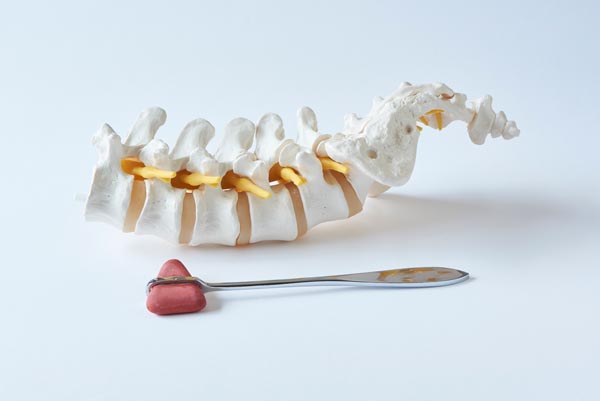A Chiropractic Office Explains Spinal Decompression

Chiropractic spinal decompression is a type of spinal traction therapy that can help relieve pain in the back, neck and legs. When working with a chiropractor, they will perform a nonsurgical spinal decompression. This works by stretching the spine and manipulating its position in order to take pressure off nerves and spinal discs. The purpose of this process is to create negative pressure in discs that will help retract herniated or bulging discs. This then allows oxygen, water and other healing nutrient-rich substances into the disc.
Keep reading to see who is qualified for this procedure and to help you decide if spinal decompression will work for you. We also lay out what to expect while going through the process.
What to expect from spinal decompression therapy
Who can benefit from spinal decompression?
Spinal decompression therapy may be a great choice for those battling constant back pain. You might like it if you are seeking a gentle, safe way to find chiropractic relief without resorting to surgery. This treatment can be effective for several conditions, including sciatica pain and ruptured or herniated discs. It also helps with posterior facet syndrome, injured spinal roots, arthritis and spinal stenosis. Additionally, people who have had a failed back surgery in the past might find relief from spinal decompression.
While nonsurgical spinal decompression is generally considered safe, several conditions disqualify potential patients from this treatment.
These include:
- Pregnancy
- Tumor
- Metal spine implants
- Advanced osteoporosis
- Fracture
- Abdominal aortic aneurysm
What a spinal decompression session is like
When arriving at the chiropractic office for a spinal decompression session, the chiropractor fits a harness around your pelvis and trunk. You will be asked to lay down on a lumbar decompression table that uses motorized traction to reposition the spine. The chiropractor will control the lower portion of the table while the upper portion remains motionless.
Unlike other chronic back pain treatment options that might cause pain and discomfort during the procedure, spinal decompression therapy should never hurt. Instead, you will feel pressure and a pulling sensation during the session. The computerized table has sensors that can tell what muscles are beginning to tense or resist stretching. These help the chiropractor easily adjust the amount of pressure necessary to get the desired results. Most offices set up a very relaxing environment for patients to make the process as comfortable as possible.
A single spinal decompression session will take approximately 30 minutes. Typically, more than one session is necessary for you to reap all the benefits of this procedure. You can expect to have anywhere from 15 to 30 sessions within a period of four to six weeks.
Are you a candidate for spinal decompression?
Nonsurgical spinal decompression therapy can be very effective at removing pressure off nerves and discs in your spine and offering long-term pain relief. It is an excellent alternative to surgery. If you would like to learn more, please call our office.
Request an appointment here: https://www.renospinecare.com or call Integrated Spinal Solutions at (775) 828-9665 for an appointment in our Reno office.
Check out what others are saying about our services on Yelp: Read our Yelp reviews.
Recent Posts
Almost 80% of people will suffer from back pain at some point in their lives and will seek spinal pain treatment. Chiropractic adjustment can help with spinal pain management. However, most of the time, chiropractors suggest other remedies as well. Read more to find out how you can find immediate relief for your spinal pain.Admittedly,…
Many have heard of a wellness center but may not have a clear understanding of what they actually are or how they treat patients. By learning more about the role a wellness center plays and the benefits of visiting one can offer you, you can decide whether you should visit one for a consultation to…
A pinched nerve occurs when a nerve becomes compressed by surrounding tissue. This can lead to pain, tingling, and numbness. This most often occurs due to a herniated disk, which could result for a variety of reasons. A pinched nerve typically affects the neck, upper back, or lower back. Several of the most common causes of…
Cervical spine decompression is a surgical procedure that can help relieve pressure on neural elements and to reduce pain caused by neural impingement. Decompression surgery may be recommended as the primary treatment for herniated disc and cervical spinal stenosis. It can also help treat cervical injuries including fractures, spinal cord tumors and other expanding diseases.…


